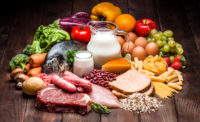Dairy plays key role in nutrition assistance programs
IDFA has encouraged USDA to continue purchasing dairy products for distribution to needy Americans through existing federal nutrition pathways.

Congress recently passed COVID-19-relief legislation that includes significant resources to help USDA provide nutritious food to families in need through the remainder of the pandemic. This has resulted in the creation of new food distribution programs, as well as changes to existing ones. It’s imperative that dairy is included in these programs as seamlessly as possible given the amount of nutritional value dairy products provide.
The Dairy Donation Program, one of the new initiatives, will encourage dairy producers and processors to donate dairy products to food-insecure families. This is a positive for multiple reasons, including that the program will also help minimize food waste by providing another possible home for milk that might otherwise be dumped, particularly during periods of high production.
In early April, USDA announced the minimum provisions for the initial donation program, including distribution plan requirements, reimbursement rates and guidelines that limit participation to dairy farmer cooperatives and processors that “account to” a federal milk marketing order. These minimum provisions were announced before the commencement of a formal USDA rulemaking process to “encourage the dairy industry to process and donate surplus milk supplies during the spring surplus milk production season.” USDA also specified that it would make retroactive reimbursements for eligible dairy product donations made on or after Dec. 27, 2020 — the date that the bill creating the program was signed into law.
USDA is expected to consider proposals for expanding the scope of the program’s parameters during a rulemaking process this summer. In future iterations, the program could allow for the participation of dairy organizations that operate outside of the federal order system or that do not account to a federal order pool. Reimbursements could also be increased to include costs associated with the processing, transportation and storage of donated dairy products.
As another program ends …
Another one of USDA’s programs, the Farmers to Families Food Box Program, recently ended. The program originated during the spring of 2020 and concluded at the end of May 2021. It has helped millions of families — as well as food producers and processors — by delivering more than 157 million boxes of nutritious dairy products, fruits, vegetables and meats to Americans struggling with food insecurity.
In its place, USDA plans to purchase and distribute food to needy families through existing federal nutrition pathways, including the Emergency Food Assistance Program, and programs that target seniors and other vulnerable populations.
The International Dairy Foods Association (IDFA) has encouraged USDA to continue purchasing dairy products for distribution to needy Americans through these programs. It is vitally important that dairy products remain a key part of all USDA food distribution programs, given the unparalleled health and consumer benefits that dairy offers for people of all ages.
Specifically, IDFA has urged the Biden administration to purchase and distribute a wide variety of dairy products across all classes of milk, including fluid milk, yogurt, cottage cheese, a range of cheeses and butter. Including different types of dairy products will broaden the appeal of the program to Americans with different tastes and palates and minimize the likelihood of market distortion. We have also urged USDA to spread out dairy purchases over time to minimize spikes in the dairy futures market that inevitably lead to increased market volatility.
Even as the light at the end of the COVID-19 tunnel appears to be getting closer, an estimated 42 million Americans may continue to face hunger and nutrition insecurity, according to Feeding America. These new programs will help ensure that all Americans in need continue to have access to nutritious dairy products.
Looking for a reprint of this article?
From high-res PDFs to custom plaques, order your copy today!






